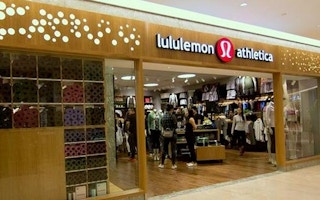What is going on?
The new decade has become characterised by a work-from-home environment which has brought good fortune to companies catering for our novel desires caused by this new set-up. Lululemon, the luxury activewear company saw an opportunity in our new-found love for leggings and managed to successfully create a community of loyal and engaged followers around its upmarket products. In acting as an entry ticket to the exclusive group of like-minded, vitality-focused and wealthy individuals, the demand for the company’s mats and leggings is showing no sign of slowing down.
In Q2 2021, Lululemon’s net revenue rose 61 per cent to US$1.45 billion with the company on a track to achieve its revenue targets two years ahead of schedule. Aside from the insanely popular items attracting new customers, its financial success can be attributed to the company’s high gross margin focus. Driving the revenue are the company’s hefty price tags which it justifies by its product-embodied, social mission, and core sustainability considerations. So let’s examine the company from an environmental, social and governance (ESG) standpoint and assess to what extent the price tags are warranted.
What does the data tell us?
A first look at Lululemon’s sustainability profile raises questions: while the stock price was skyrocketing, the company’s environmental and social sub-scores fell by more than 11 per cent year-on-year*. In addition to Lululemon’s CEO misconduct allegations, the brand was accused of exploiting low-cost manufacturing in Bangladesh-based factories without ensuring a safe code of conduct for garment workers barely earning minimum wages. This raises questions as to whether Lululemon actually operates in the value system that underpins it’s socially-orientated mission.
In terms of governance, Lululemon appears to perform significantly better. However, despite ranking at the 98th percentile* across the entire Arabesque S-Ray universe, the company clearly fails to live up to its promoted around social and environmental topics (specifically resource use, product quality and environmental stewardship*).
What is the message here?
Lululemon is a textbook case study in which the firm’s product goes far beyond its material use, embodying the firm’s mission and providing a unique opportunity for individuals to identify themselves with the company’s values and mission. By connecting, interacting and engaging with consumers, the company creates a strong sense of belonging. But the authenticity of a mission and underlying values obviously crumbles when there is a lack of consistency across stakeholder groups – as is the case with Lululemon.
It is a matter of time before some of the brand’s followers notice these discrepancies and question whether or not the firm’s behaviour still reflects their own values. Until then, we remain hopeful that after the period of unprecedented growth, Lululemon will find the time to realign itself with its supposed core values. Thankfully, we’ve already helped to identify how.









